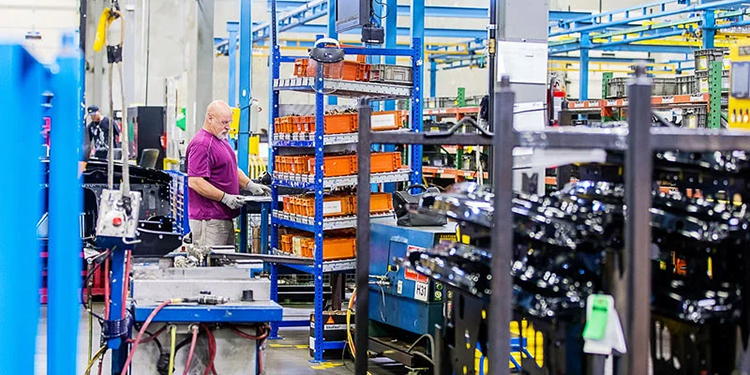Ergonomic Industrial Workstations Reduce Worker Fatigue

The number of manufacturing and assembly operations in the U.S. is forecast to grow at a compound annual growth rate (CAGR) of 12.96% between 2024 and 2028. Simultaneously, value added services — often customizations performed by workers — are likely to expand at a CAGR of 3.16%. To facilitate those tasks, ergonomic industrial workstations reduce worker fatigue while enhancing efficiency and quality.
“Even as the industry grows, manufacturers are facing a variety of complex challenges. As automation, precision engineering, and digitalization increase, the pressure to deliver high-quality products swiftly has intensified,” explained Megan Baker, Director of Marketing at UNEX. The company is a member of the Ergonomic Assist Systems & Equipment (EASE) Council.
“This pressure is placing a significant burden on industrial workers — particularly those tasked with producing high-quality work at high rates. They are more likely to be repeating the same movements over and over, which can lead to fatigue,” she continued. “To enhance these workers’ well-being and support their operational efficiency, it’s important to provide them with ergonomic industrial workstations outfitted with a variety of key features.”

What are Ergonomic Industrial Workstations?
Ergonomic industrial workstations are workbench tables, outfitted for use in manufacturing, assembly, and fulfillment operations. They are customizable with a variety of modular features and options that allow them to better suit each worker and task. Because no two operations or processes are the same, neither are different workstations.
“All ergonomic industrial workstations are custom designed with a layout and configuration that matches the natural movements and capabilities of the human body,” Baker said. “Many of these features minimize tiring and awkward postures, as well as reaching, stretching, bending, pulling, twisting, or unnecessary movement and steps.”
Key Ergonomic Features Reduce Fatigue, Boost Productivity
“The goal of an ergonomic industrial workstation’s design is to leverage key features that allow workers to perform tasks more productively,” continued Baker. “The best designed workstations increase efficiency by reducing wasted search time and movement. That can streamline a task.”
These efficiency boosters also contribute to a healthier, more satisfied workforce, she added. “Because they minimize physical strain, ergonomic industrial workstations reduce fatigue. That, in turn, cuts absenteeism and workplace injuries,” said Baker. “As it continues to be difficult to attract, hire, and retain a qualified workforce in industrial jobs, employers who pay attention to ergonomics generally experience less turnover.”

Among the most frequently incorporated workstation features are:
- Height adjustability, either by manual or powered raising or lowering of the surface, to accommodate different workers. “This function allows persons of variable heights to use the same workstation across different shifts,” Baker explained.
- Tilting or rotating surfaces of customizable widths and depths. Each allows easier access to the work.
- Compact, modular cabinets and drawers placed within easy reach. “This minimizes the risk of a repetitive stress motion that could lead to a musculoskeletal injury,” noted Baker. “Some workstations utilize roller- or wheel-style flow lanes that harness the power of gravity to advance cartons or bins of parts forward. This also reduces fatigue associated with repetitive reaching and pulling motions.”
- Integrated systems — such as peg boards, shelving, color coded parts bins mounted on bars, keyboard and monitor or tablet display arms — to organize parts. This ensures that all necessary devices and implements are easier to find, as well as keeps the work surface clutter free.
- Task lighting and power sources for convenience and to minimize eye strain.
Find More Productivity Boosting Ergonomic Solutions
Ergonomic industrial workstations are just one of many different solutions available to reduce worker fatigue and increase productivity. For more ideas, equipment, and best practices, visit the Ergonomic Assist Systems & Equipment (EASE) Council’s website. The organization’s members offer a variety of publications, guidelines, training courses, and more.



